Choosing the right Bike Back Rack is essential for commuters, tourers, and anyone needing to carry cargo on their bicycle. After rigorous testing, we’ve found the Topeak Explorer MTX 2.0 to be the top pick as the best all-around bike back rack due to its ease of installation, stability, and compatibility across various bike types.
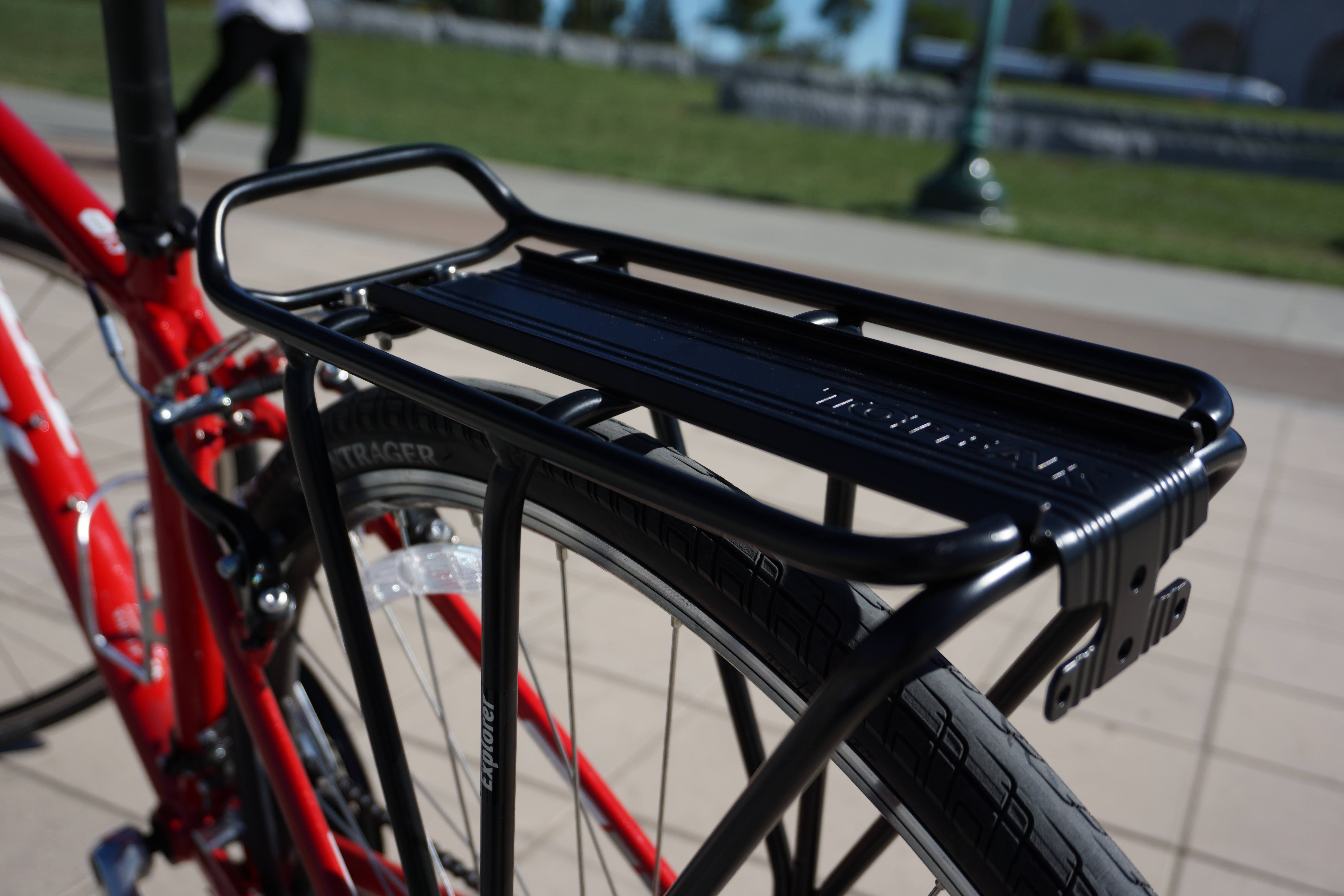 A rear view of a black bike rack installed on a red bike, showcasing its sturdy construction and positioning on the bicycle.
A rear view of a black bike rack installed on a red bike, showcasing its sturdy construction and positioning on the bicycle.
The Topeak Explorer MTX 2.0 rack stands out as the easiest to mount on a wide range of bikes, providing exceptional stability even when loaded with heavy panniers. This makes it our top recommendation for anyone seeking a reliable bike back rack.
Top Pick: Topeak Explorer MTX 2.0 Rack

The Topeak Explorer MTX 2.0 excels in ease of installation across numerous bicycle models and provides superior stability when carrying substantial pannier loads. It’s simply the best rear bike rack available for most cyclists.
Buying Options
$53 from Amazon
$53 from REI
$53 from Walmart
For Bikes with Disc Brakes: Topeak Explorer MTX 2.0 with Disc Brake Mounts
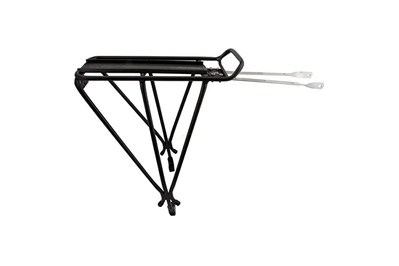
If your bike is equipped with disc brakes, the Topeak Explorer MTX 2.0 with Disc Brake Mounts is specifically designed for you. This rear bike rack maintains the same ease of installation and stability as the standard version, while accommodating the different mounting requirements of disc brake systems.
Buying Options
$58 from Amazon
$58 from REI
The Topeak Explorer MTX 2.0 outperforms other bike cargo racks we tested in terms of versatility. Its flexible attachment arms and ample wheel clearance make it compatible with a broader spectrum of bicycles. Furthermore, its robust construction, featuring three stays on each side, provides superior stability compared to similarly priced models with only two stays. The current iteration of the Explorer remains functionally identical to our test model, with a minor modification at the front of the platform to integrate with Topeak’s newer rack-top bag line.
Whether your bike uses 26-inch, 700c, or the increasingly popular 27½-inch wheels, the Explorer MTX 2.0 is highly likely to be compatible. For bikes with disc brakes, it’s crucial to choose the disc-specific version to ensure proper clearance. Owners of 29-inch wheel mountain bikes should opt for the 29er model, also available in a disc-specific variant.
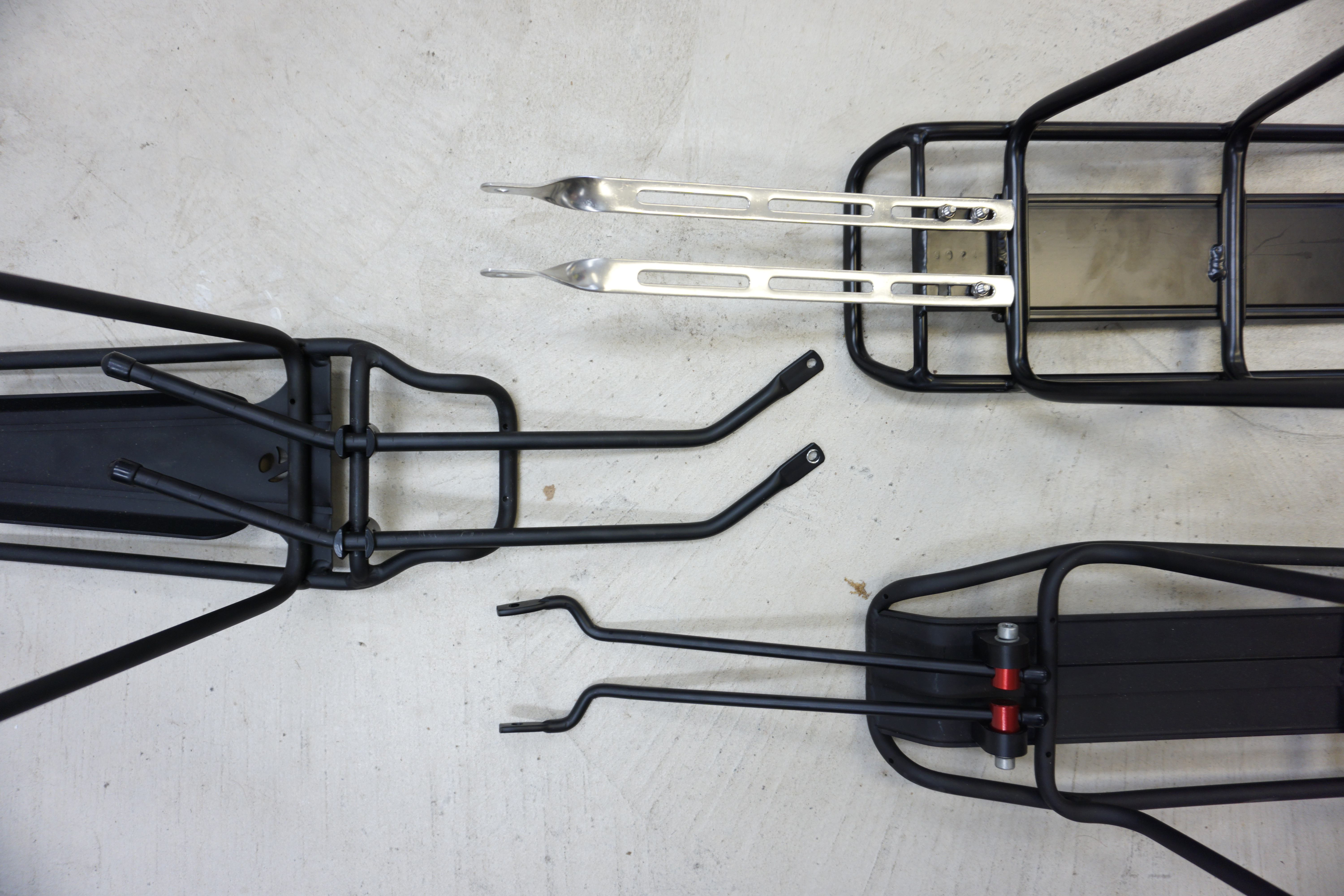 A trio of bike racks laid upside down on a gray concrete surface, highlighting their mounting components and designs.
A trio of bike racks laid upside down on a gray concrete surface, highlighting their mounting components and designs.
The flexible steel arms of the Explorer bicycle rack (top) offer easier fitting compared to rigid arms (below), which may sometimes require cutting for correct length adjustment.
The flexible flat steel arms of the Explorer are a key design feature, allowing them to conform to a wider array of bike frame rack mounts. This adaptability simplifies achieving a secure fit compared to racks utilizing stiff aluminum tubing arms, such as the Axiom Journey.
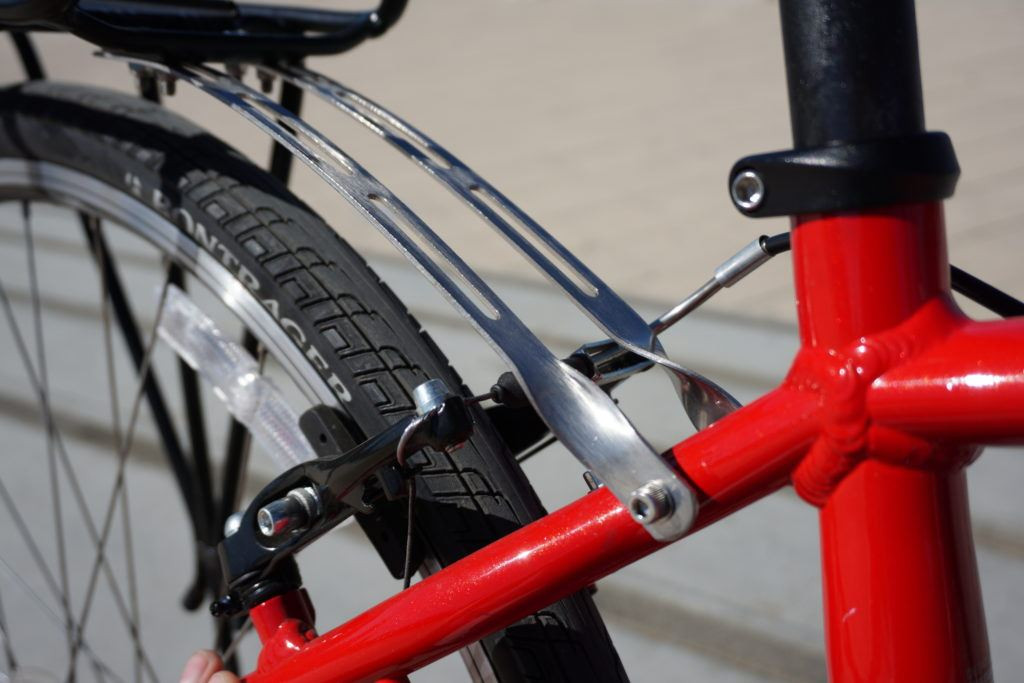 A detailed shot of the Topeak Explorer bike rack's attachment arms, showing their flexible and adaptable design for bike frames.
A detailed shot of the Topeak Explorer bike rack's attachment arms, showing their flexible and adaptable design for bike frames.
The Explorer’s flat attachment arms are designed to bend, accommodating frame variations and ensuring a snug fit on diverse bike models as a reliable bike back rack solution.
On our Trek hybrid bike with 700c wheels, the Explorer provided a generous 1¼ inches of wheel clearance, surpassing all other tested racks. This substantial clearance, coupled with the adjustable arms, enhances compatibility across different bikes and ensures sufficient space even for robust puncture-resistant off-road tires. In contrast, some racks, like the Axiom Transit, offered minimal tire clearance.
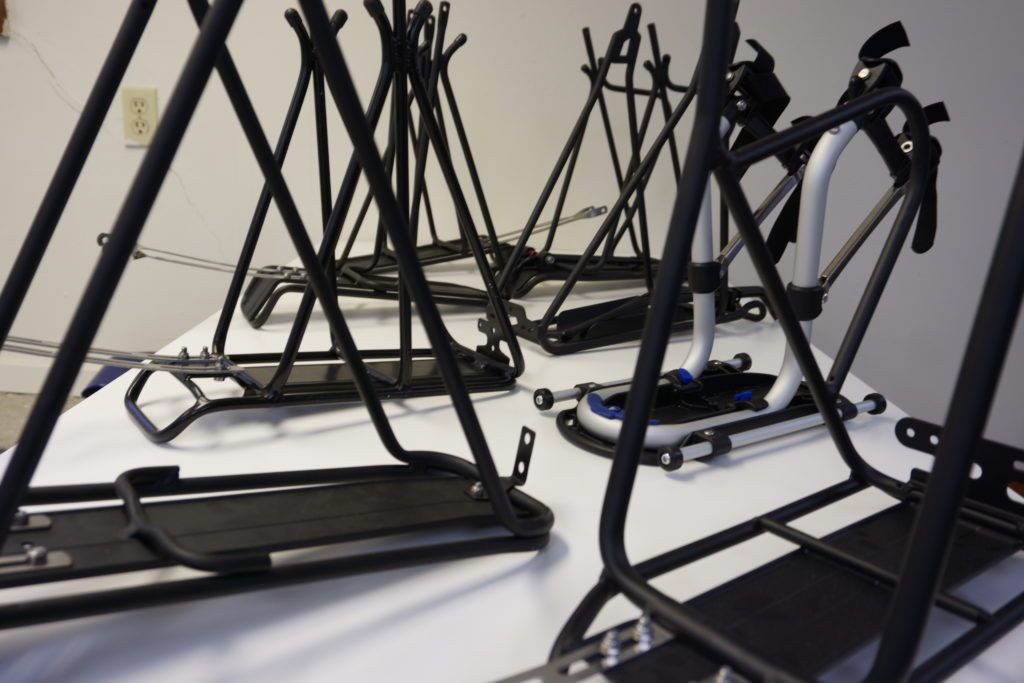 A group of seven bike racks positioned upside down on a bright white table, showcasing a range of models tested for bike cargo carrying capacity.
A group of seven bike racks positioned upside down on a bright white table, showcasing a range of models tested for bike cargo carrying capacity.
We conducted thorough installation and testing on eight different models of bike back racks to determine the best options for cyclists.
Once properly installed, the Explorer delivers a robust and stable platform capable of carrying up to 57 pounds of cargo. While material composition is often discussed in rack durability assessments, the Topeak Explorer utilizes 6061 hollow aluminum. The “hollow” aspect reduces weight, while 6061 aluminum is a widely recognized, durable, and versatile material.
However, the structural support of a bicycle rack is equally critical to its material. Welded joints, rather than bolted rivets, are essential for strength. The Topeak Explorer employs three triangulated stays per side for enhanced support, unlike many racks with only two. Although some racks may share a similar 57-pound capacity rating (like our budget pick, the Eco Rack), the third stay on the Explorer significantly improves load stabilization. For even greater load capacities, heavy-duty racks incorporate further structural enhancements.
During testing, we loaded each side of the Explorer with panniers containing 2 gallons of milk (17 pounds per side) to evaluate sway, and the rack remained steadfastly in place, proving its reliability as a bike back rack.
Additional user-friendly features of the Explorer include a fully welded taillight mount, considerably more durable than the bolted-on mounts found on many competitors. Topeak includes steel mounting hardware with nylon-insert locking nuts, which effectively dampen road vibrations and maintain secure fastening better than standard nuts, contributing to a more secure bike back rack experience.
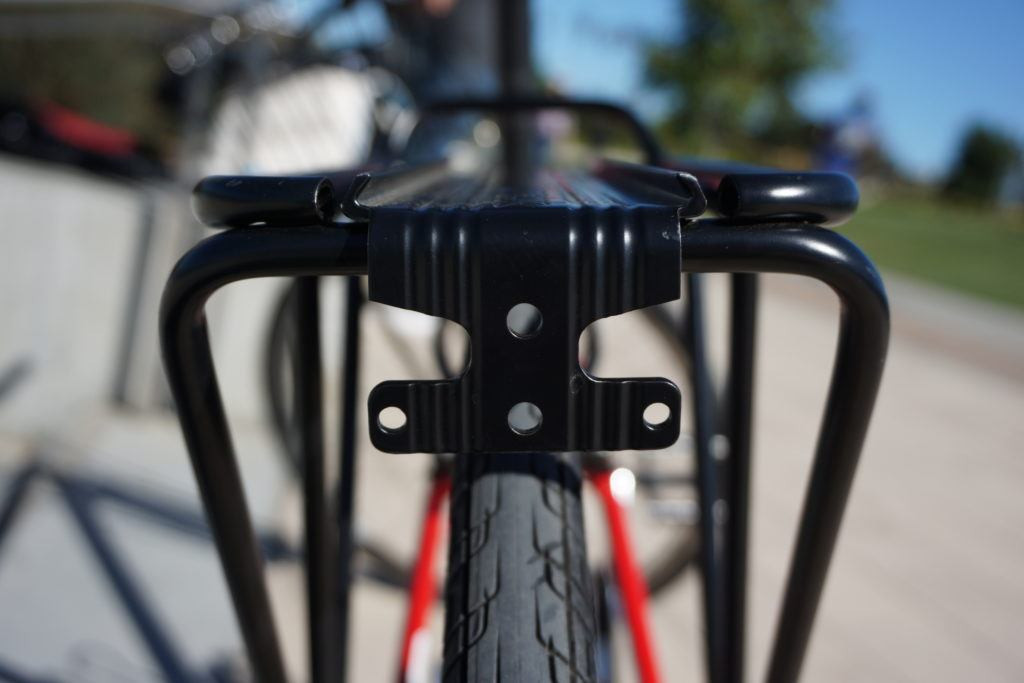 A close-up view of the taillight mount on the black Topeak Explorer rear bike mount, emphasizing its robust and integrated design.
A close-up view of the taillight mount on the black Topeak Explorer rear bike mount, emphasizing its robust and integrated design.
The Topeak Explorer features an exceptionally durable and integrated taillight mount, a testament to its thoughtful design as a reliable bike back rack.
Rack platforms, in general, add significant utility. The Explorer’s platform is compatible with both original Topeak MTX QuickTrack luggage and the newer MTX 2.0 QuickTrack system (though these were not tested in our evaluation). Furthermore, the platform offers practical benefits such as a discreet way to carry a bike lock when panniers aren’t in use, and, like most rack platforms, it serves as a built-in fender, providing protection from road spray in light rain.
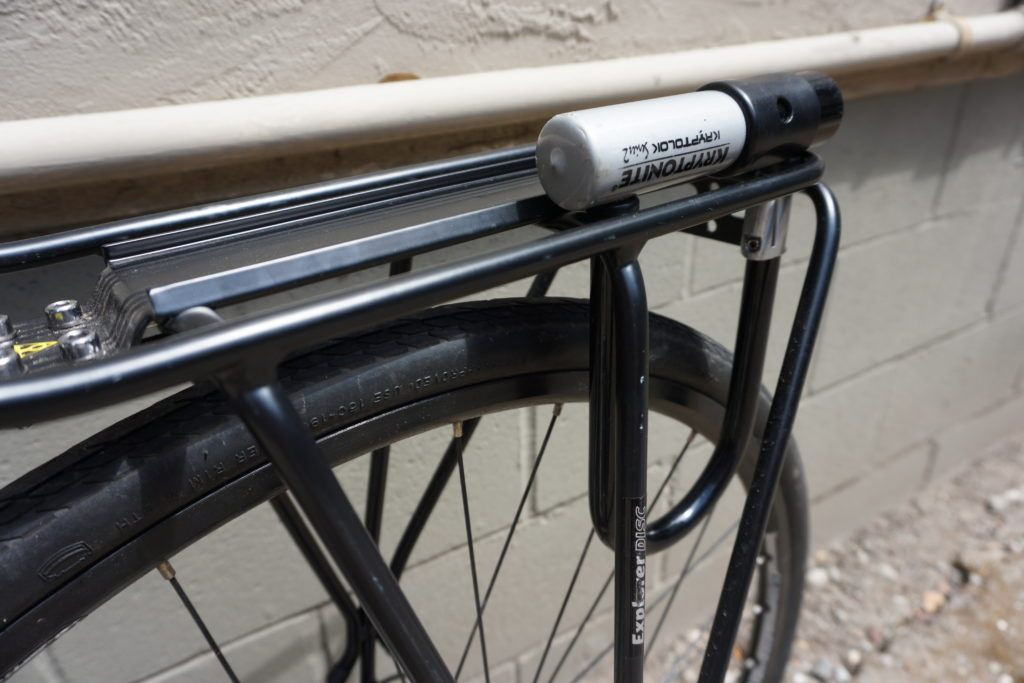 A bike lock hanging upside down from a black bike rack platform, demonstrating a practical use for commuter cyclists.
A bike lock hanging upside down from a black bike rack platform, demonstrating a practical use for commuter cyclists.
A commuter-friendly tip: utilizing your bike back rack platform offers an easy and convenient method for transporting a bike lock during your rides.
While cycling publications often focus on road or mountain biking, reviews for commuter racks are less common. However, Amazon reviewers rated the original Explorer version at 4.6 out of 5 stars from nearly 4,000 reviews, highlighting its consistent user satisfaction. The current version holds a 4.3-star average across 43 reviews as of September 2024.
Minor Drawbacks, Not Deal Breakers
In the realm of bike accessories, “easy to install” is a relative term. The primary challenge with any bike back rack, including this one, lies in determining the correct rack variation for your bike and navigating the installation process. (If you’re unsure of your bike wheel size, check the tire sidewalls for printed or embossed size information.) Should you encounter difficulties, consulting your local bike shop is highly recommended.
Bike shop professionals can confirm the appropriate Explorer version for your bike and address any mounting issues. They may also stock the Explorer, given its popularity as a dependable bike back rack.
It’s also possible your bike frame may lack the necessary attachment points for rack mounting. In such cases, P-clamps offer a solution. These small metal loops, commonly used in construction for cable management, are available at hardware stores. By wrapping a P-clamp around your bike frame at the required location, you can create the needed attachment point for your bike back rack.
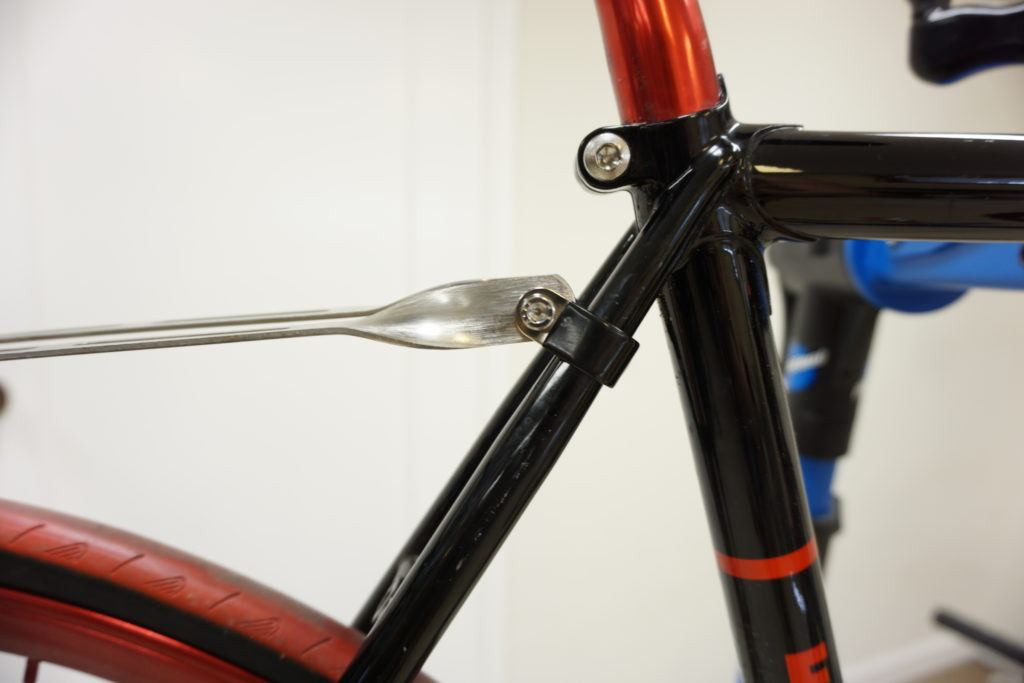 A close-up of a racing bike frame with a P-clamp securing the attachment arm of a rear bike rack to the seat stays.
A close-up of a racing bike frame with a P-clamp securing the attachment arm of a rear bike rack to the seat stays.
A bike back rack securely mounted to a vintage racing bike’s seat stays using P-clamps, demonstrating an adaptable mounting solution.
